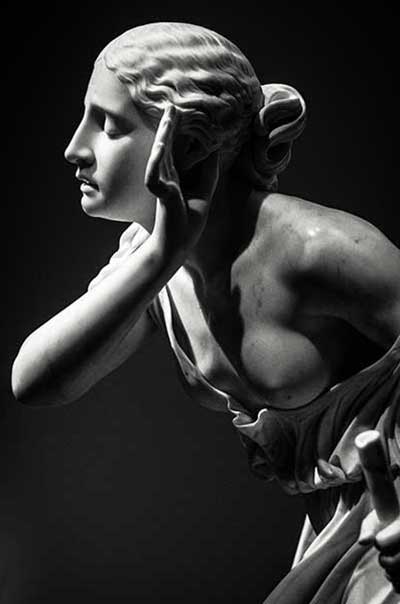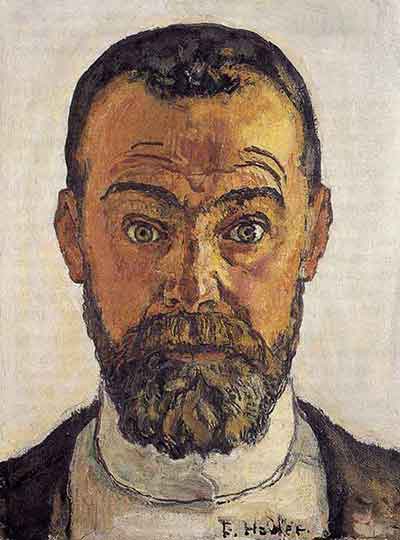
Licence Artwork:
Public domain
The rituals of Ferdinand Hodler
Ferdinand Hodler had a troubled childhood as he lost his father and two younger brothers to tuberculosis. Unfortunately, her mother died a few years later from the same disease after establishing a new life and remarrying a decorative painter. In the absence of his mother, his stepfather used him in his work as a labourer. But as Ferdinand grew up, he looked for a better environment to widen his artistic proficiency. He travelled to Geneva and met Menn, a Swiss Painter who helped him orient his works to German and Italian artistic styles. [1]
His family’s loss caused Hodler to focus on death’s horrific impact, which had overshadowed the painter’s merciless destiny. He was fascinated by the crucifixion of Christ, immersed in thoughts of suffering, mental distress, and severe illness. Gradually the theme of death became one of his primary subjects of work.
It was difficult for Hodler to make a living from his works. His painting “Night” failed to survive in Geneva’s Beaux-Arts exhibition. After that withdrawn from the exhibition, ignored and unrecognized by the critics, he approached Salon in Paris to exhibit “Night” and once again tried his luck among French artistic society. He took advantage of controversial artistic discussions and disagreements and attracted many artists such as French sculptor Rodin and the famous mural painter Chavannes. [2][3]
He once said that the Swiss would not understand him until they see he gets recognition elsewhere. He considered French assessment and the gained credits as his triumph and returned to Geneva to succeed with his determined efforts. The representatives of the new European artistic movements invited him to join Berlin and Vienna Secession.
Hodler began his work with the influences of Realism and Symbolism. But gradually, he generated and found his own artistic identity.
The Parallelism of Ferdinand Hodler
Parallelism characterized Hodler’s work and emphasized an ideological attitude that introduced settings and arrangements in the phenomenon of repetition. Hodler applied repeated figurative concepts that resembled one another. His allegorical characters were getting closer simultaneously, approaching the same direction and unity. These coordinated parallels followed one another who moved in the same shared path. He believed that equality and sameness are life orders based on repetition and a homological structure. His monumental paintings with dancing gestures or rituals have intense linear compositions and are intensely mystical. He depicted the woman as inherent affection who harmonized with nature and displayed the child as a joyful and innocent existence.
As a mural painter, he changed historical painting from narrative style to simplified designs with powerful expressions. He was also a great landscape painter with the attitude of Parallelism. His landscapes created monumental compositions of natural repetitions and highlighted the organic orders in a solitude calmness. The Swiss Mountains’ lakes, trees, and rocks were Hodler’s favourite subjects. [4]
Hodler remained unknown and somewhat unidentified in the public eye. Future generations shall rediscover him for his significant influence on Modern Art.
Get more information on this overview page.
Text: Lalerou
© Copyright. All Rights Reserved
1- The Editors of Encyclopaedia Britannica. (1998, July 20). Ferdinand Hodler | Swiss artist. Encyclopedia Britannica. Retrieved February 21, 2023, from https://www.britannica.com/biography/Ferdinand-Hodler
2- Ferdinand Hodler: Swiss Symbolist Painter. (n.d.). Art Encyclopedia. Retrieved February 22, 2023, from http://www.visual-arts-cork.com/famous-artists/ferdinand-hodler.htm
3- Fehlmann, M. & EASTERN MEDITERRANEAN UNIVERSITY. (2009). Ferdinand Hodler: Catalogue Raisonné der Gemälde, Die Landschaften by Oskar Bätschmann and Paul Müller, with contributions by Regula Bolleter. 19thc-artworldwide. Retrieved February 23, 2023, from http://www.19thc-artworldwide.org/index.php/autumn09/ferdinand-hodler-catalogue-raisonne
4- Times, N. Y. (1987, October 30). Art: Ferdinand Hodler, His Swiss Landscapes. The New York Times. Retrieved February 24, 2023, from https://www.nytimes.com/1987/10/30/arts/art-ferdinand-hodler-his-swiss-landscapes.html
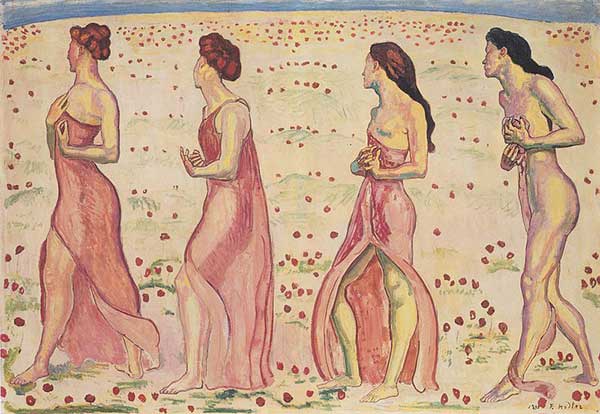
Hodler – Die Empfindung – 1901-02
Public Domain, Wikimedia Commons
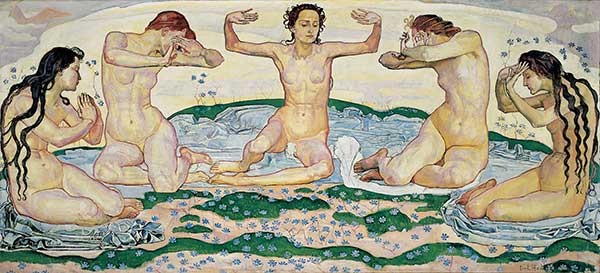

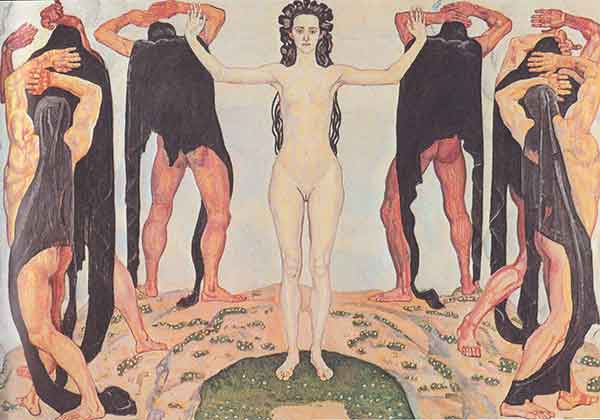
- Category: Modern Art Styles In Painting
Vintage
Vintage
Ornamental
